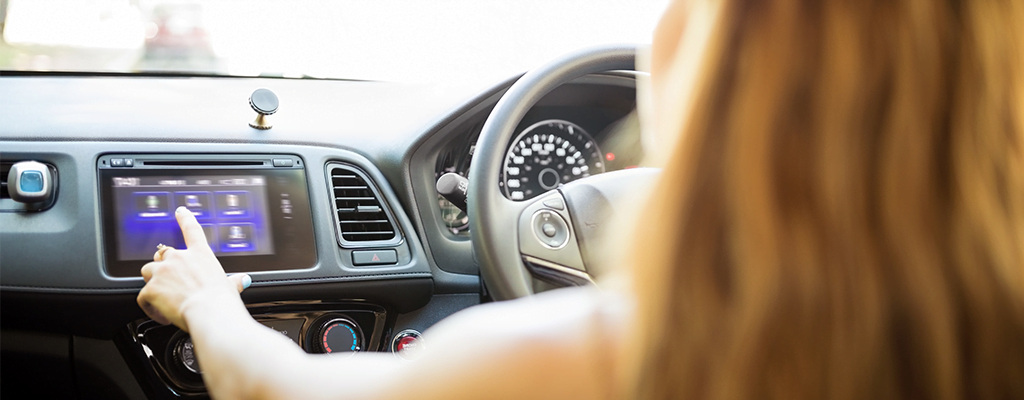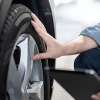
In an ideal world our eyes and minds would be 100% on our driving, 100% of the time.
However, in the real world we are easily distracted by all sorts of things – children or pets in the back seat, the radio, mobile phones, other road users and, increasingly, in-car technology such as infotainment systems.
In fact, a recent IAM RoadSmart Twitter poll found that just under half (44.4%) of respondents said that they find infotainment systems distracting, while 42.1% found other road users distracting; and research by road safety charity Brake and Direct Line insurance found that 91% of drivers believe adjusting their satnav is a distraction.
Business drivers face their own set of potential distractions – communication from bosses, updates to delivery schedules, having to juggle tracking apps alongside normal activities, and numerous others.
Distractions impair our ability to react quickly and could have serious consequences for you and your passengers, as well as other road users.
New legislation
The law also recognises the danger that being distracted while driving can pose. While it’s been illegal to use a hand-held mobile phone since 2003, in March this year the law changed yet again in response to the fact that mobile devices are now capable of so much more than making and receiving calls and text messages.
The update means it’s now also illegal to unlock any hand-held smart device for almost any reason, including accessing the internet, using apps, checking notifications, or accessing any stored data such as files, playlists, photos, or messages.
There are exemptions, however: it’s legal to use a hand-held mobile phone in an emergency, for navigation, or to make a contactless payment for goods or services – such as at a road toll. However, the device must be in a cradle – not in your hand.
Tips to help avoid distractions while driving:
- Watch our free 2 minute video: Managing Distractions
- Set your destination on your satnav before you start your engine to avoid trying to key in details after setting off – whether you’re moving or in stationery traffic.
- Avoid playing with infotainment settings while you’re driving. Instead, select your favourite radio station, connect your digital music device (or load the CD player!) Before you set off.
- Newer mobile phones include a setting that will limit notifications whilst driving. If yours doesn’t, either turn it off, put it in the boot, or switch to aircraft mode so that you aren’t tempted to check it. If you need to make a call or send a text stop at a service station or in a layby.
- If you’re faced with an emergency and you must make or receive a call while driving, preferably pull over and stop the car. When absolutely necessary, always be sure to use hands-free mode when moving.
- Avoid eating and drinking while you’re driving – dropped food or a spilled drink will mean your mind isn’t on the road.
- If you’re feeling tired, stop at the next services to take a break. Have something to eat and drink, stretch your legs and if necessary, take a nap.
- Passengers can be a great accompaniment on a long journey, but don’t let them distract you; if children are playing up in the back of the car, stop as soon as you can to calm them down. Try to give them suitable games or toys to help keep them occupied during the journey, plus frequent stops for drinks, snacks and the toilet will help prevent problems.
- When driving on busy roads, try not to let the actions of other motorists distract you; concentrate on keeping a safe distance between you and the vehicles in front, and increase that distance if the vehicles behind you are too close.
Protect your staff
Are you and your drivers ready to deal with the distractions that could threaten your safety on the road? Educating your drivers with Toolbox Talks sessions raises their awareness of the different types of distractions they might face, and could help protect them and the road users that they encounter.
Toolbox Talks are virtual classroom-learning sessions, delivered by an Approved Driving Instructor, in a manner designed to maximise engagement from all of the participants – informal, fun, and encouraging lots of interaction to make sure that the lessons are learned as thoroughly as possible.
Get in touch to find out more about Toolbox Talks and the other ways IAM RoadSmart can enhance your fleet safety.



